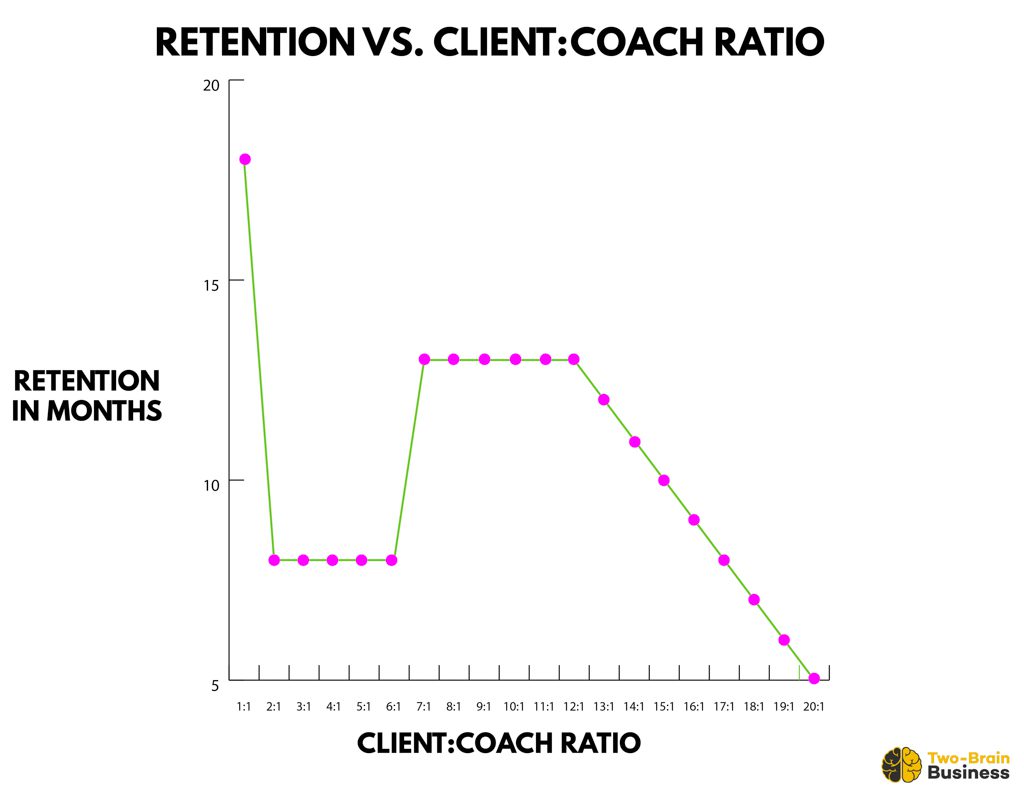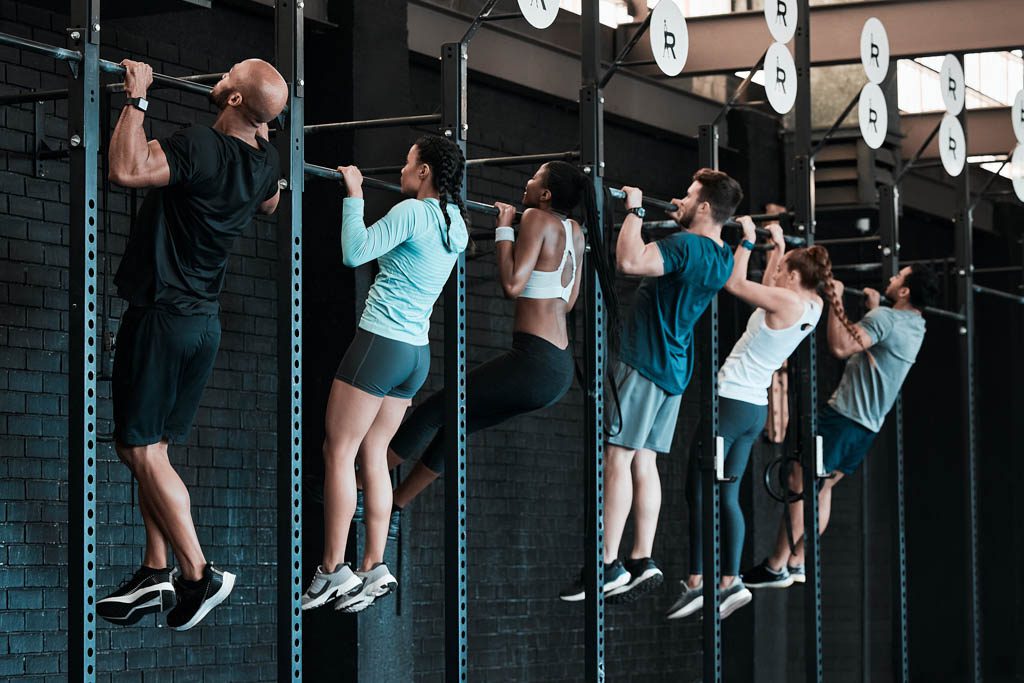We have years of hard data on class size in gyms, and we know the ideal number of participants.
Gym owners don’t need to guess anymore.
You don’t have to try and consider “culture” or any other unmeasurable elements.
In this series, I’ll give you proof from the largest data set in the microgym industry. Here, I’ll tell you how many people should be in your classes. In the next post, I’ll tell you how much each class is paying you. Finally, I’ll give you a plan to address those sessions that are only attended by one or two people.
First, the data.
Real Numbers
Length of engagement (LEG) is a key business metric for gyms: how long is a client likely to stay in your gym?
Read more about LEG here: “Don’t Skip LEG Day”
Adherence is a key retention metric: how often do clients show up in relation to the plans they’ve purchased?
Read more here: “Retention and Adherence”
Both long-term retention and adherence are highest with 1:1 training.
This makes sense: A client has an appointment to meet with someone, has paid a premium for that appointment and is likely to keep it. This 1:1 setting is also where clients make the fastest progress, so they have both intrinsic and extrinsic motivation to show up.
But retention and adherence drop for 2:1 training for several reasons. In my experience, the added partner accountability is offset by partner conflict.
For example: “Sam is tied up at work, so we’ll just cancel our 2:1 training for both of us and make it up next week.” Instead of one partner dragging the other into the gym, one partner can just as easily derail the other.
The numbers are consistent between two clients and six, but then they go up.
A class of seven people has the second-best retention and adherence rates after 1:1 training. The benefits of groups really start to show for the gym at seven people.
Those values don’t change much until you hit more than 12 people. Retention and adherence values drop at 13 and then plummet after that.
The data makes sense if you think about it: Groups larger than about a dozen can be fun, but people can also feel as if “no one will miss me if I’m not there.” Or the coach’s attention might be split too many ways that some participants don’t get the personal contact and connections they need.
Of note:
- This data is based on one coach per class, with participants doing variations of the same general workout. Adding a second coach might solve part of the problem.
- Adding a client success manager (CSM) might solve the other part.
- Some well-run gyms use semi-private training and have great retention when four clients do personalized programs at the same time, but this requires a precise plan executed by a skilled coach who can give significant levels of personal attention to up to four clients at once. And successful semi-private programs are backed up by airtight, fully documented client journeys designed to maximize retention and adherence.

In summary:
- The people who do personal training have the best retention rates.
- Keep your group classes in the seven to 12 range for maximal retention.
Don’t worry if you have huge groups or tiny groups. In the next post in this series, I’ll tell you how to identify your best and worst slots. And in the final post, I’ll tell you how to drop your worst groups.

